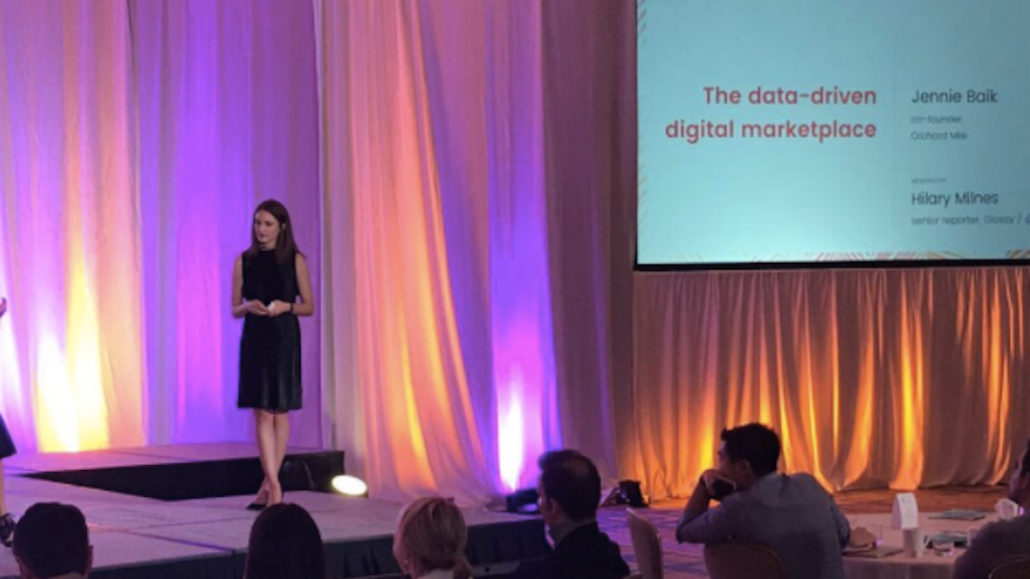

This week, executives from top brands and retailers gathered in Miami for the first-ever Glossy Summit, focused on mastering the modern retail experience.
We held group meetings, where we discussed some of the biggest issues these industry leaders are facing today, including working with influencers, reaching customers across platforms and choosing between wholesale partners and a direct-to-consumer model. The following are the main concerns shared on Day 1.
Navigating the influencer space
“When you work with a big influencer, you’re not offering your customer anything that they can’t get elsewhere.”
“The microinfluencer space is known as the wild, wild west. You have to know what your goal is and give them direction, rather than just jumping on the trend.”
“We use a lot of smaller influencers, and they’re a huge opening for user-generated content, and that helps a business generate content quickly. We can then see the return on our investment in them. That gives us metrics to prove impact.”
“If you’re trying to drive traffic at a store in Macy’s in Kentucky, it’s important to work with the local community, and that’s not always going to be [influencers with] the biggest following.”
“What’s worked well for us is giving the little guys a chance, too, and bringing them together to talk about the same thing. Building a community is what Instagram is about.”
“The influencer community is so fragmented, the big ones don’t have the same impact anymore.”
“Is the best way to get customers today through a traditional, storytelling side or through an authentic or influencer side? That’s what we’re trying to figure out.”
“The backlash is starting. If you’re Selena Gomez, people are picking up on it — you’re the face of every brand. If you’re going to be everything, you’re not going to be anything. It deserves special consideration so you don’t run into that.”
“If we’re in the hand of influencers too much, and then the influencers die, proverbially, the other mediums are still going to be there, and you’re still going to have to get someone talking. The newness has to be there.”
“You can’t rely on influencers so much. Their channels are going to become boring.”
Reaching customers across platforms
“How do you keep your messaging consistent across platforms on a small budget?”
“The biggest challenge is plurality in the marketplace. Customers on the higher and lower end — they’re looking for the same thing a lot: an aspirational brand, customization. How do you speak to both?”
“With digital, we have so much data and information about our clients, targeting the message is what you need to do. You can decide who you want to see this message and who you don’t.”
“Authenticity is important, but an Instagram caption is not a KPI or an ROI.”
Working with wholesale partners
“We’re selling so much of our product through department stores, but obviously, there’s been a lot of bad news over the past year [surrounding] them. We know we have a customer who loves our product, but we want a second life for this brand, so we want to showcase it in new ways to connect with that next generation customer.”
“There is definitely a disjointedness. People feel like e-commerce is a rival to the wholesale, so there’s a conflict. When you partner with a wholesale account that is not digital or that simply has a digital component, they’re not asking the right questions to facilitate a brand and they’re not providing the right information. Not having that synergy is definitely a challenge.”
“I just launched an exclusive brand with a retailer, and they wouldn’t share the data, even though they were my only data point. Now the brand is about to die. I launched it nine years ago, right before there was social media. If I were to do it again, I’d go direct-to-consumer. I wouldn’t even launch a wholesale brand. It’s so hard to build a brand through retailers at this point, because they’re not good partners. I think it’s a broken system. If you don’t own the customer, there’s no way to find out who the customer is.”
“We are a pure direct-to-consumer company, and we did explore the wholesale side, too. Our margins are based on the direct-to-consumer model: We’re going to give customers value, so our margins are a lot slimmer than established brands. Wholesalers don’t understand that — they try to squeeze you. But at the end of the day, it doesn’t make sense for a company with plans to be a direct-to-consumer company to get squeezed by a wholesaler, and also to not have that leeway to give good service to a customer, like free returns and exchanges, or customization. We find that we can’t do that when we work with wholesalers.“
Contributing: Jill Manoff, Hilary Milnes.
More in Marketing

Meta’s Threads expected to have ads this year
The move would make Threads Meta’s latest bit of ad real estate venue just over a year after its launch.

Mobile esports reaches new heights in 2024 with a boost from Saudi Arabian investment
Mobile esports activity has been picking up gradually since 2021, but 2024 could be one of the most lucrative years yet for the esports teams and players participating in popular mobile games such as “PUBG Mobile” and “Mobile Legends: Bang Bang” (MLBB).

Q1 ad rundown: there’s cautious optimism amid impending changes
The outlook for the rest of the year is a tale of two realities.








